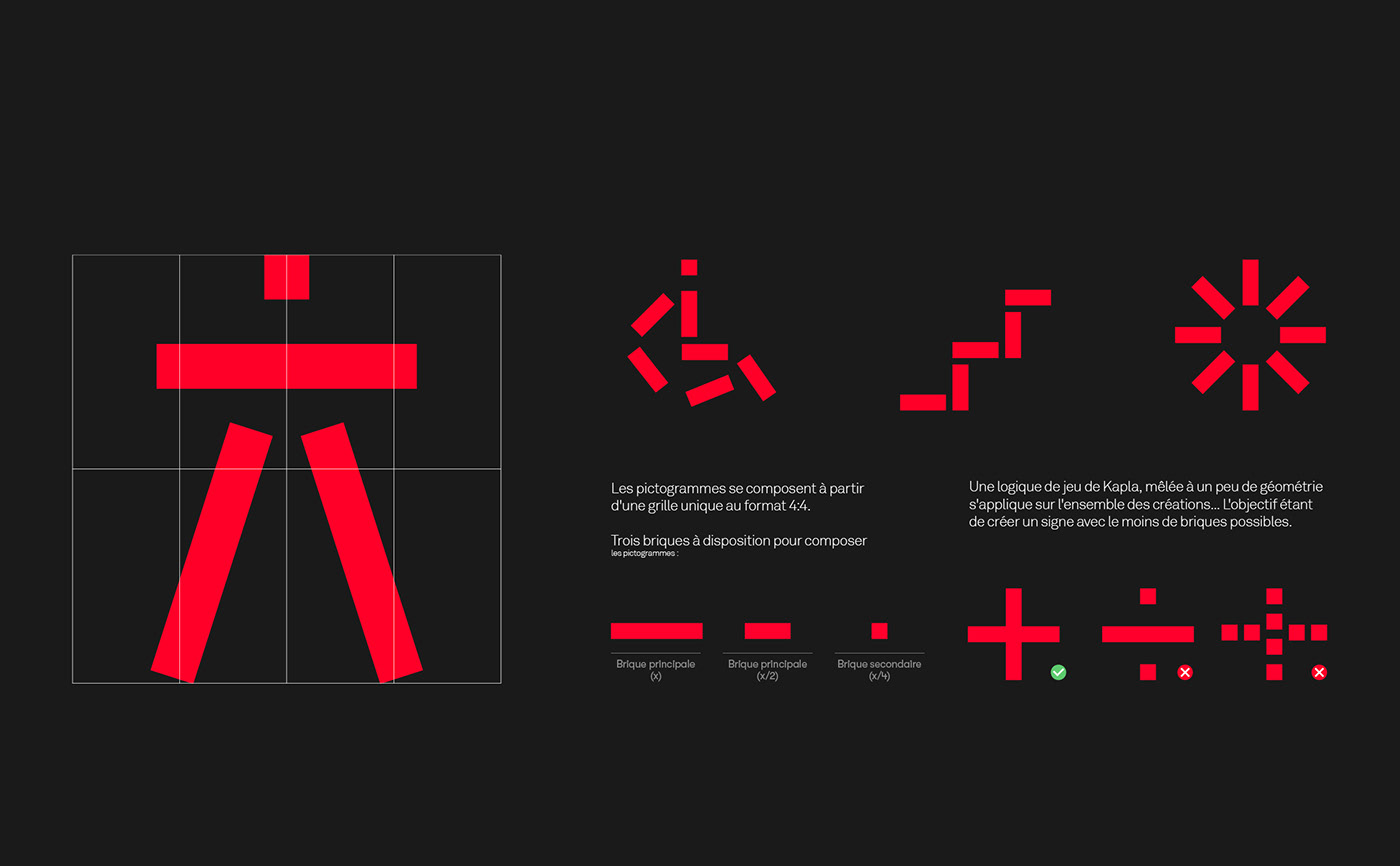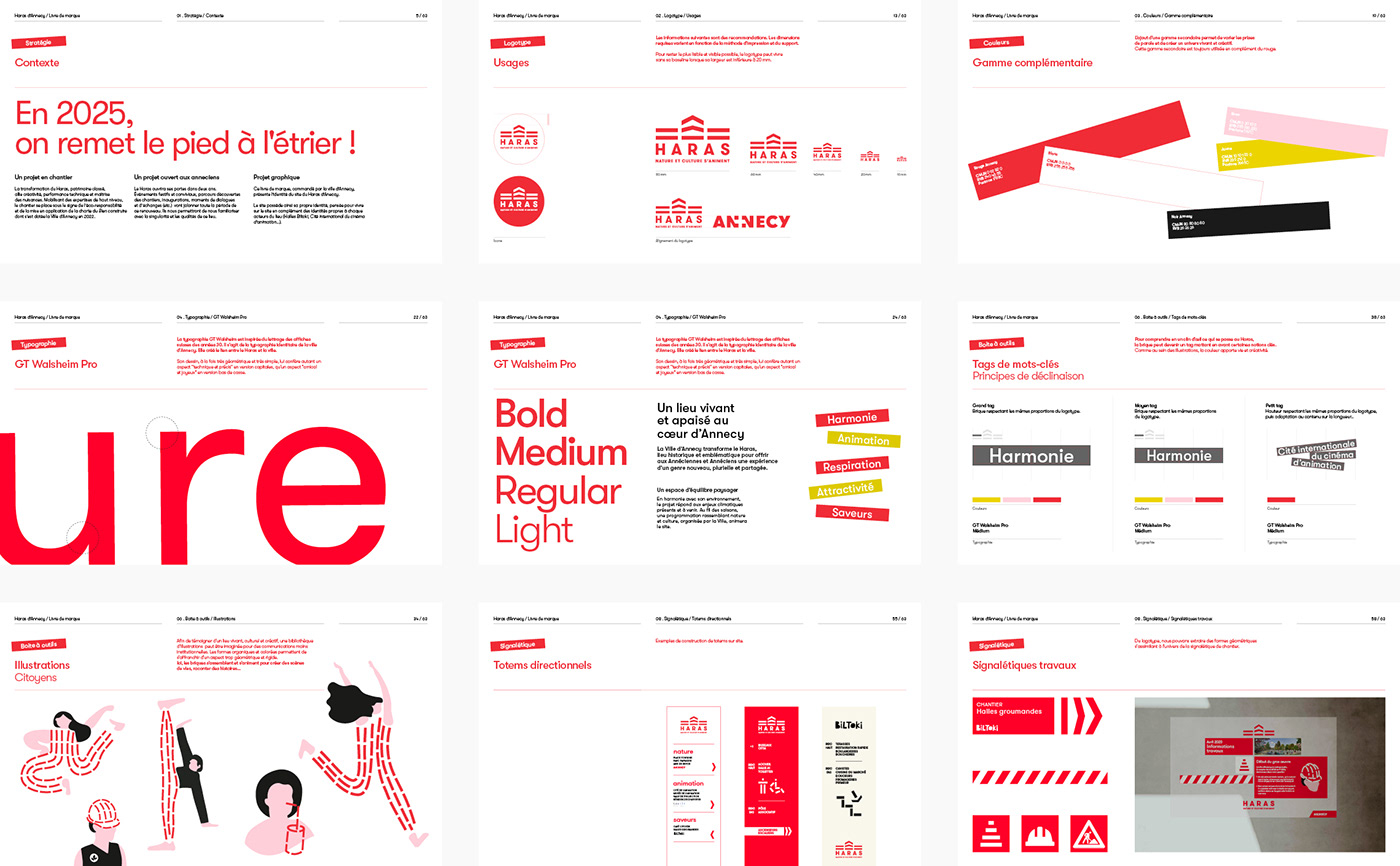
Harras Annecy
New cultural destination
Annecy has been home to a stud farm since the First Empire. The site was built in 1880 on a three-hectare park in the heart of the city center, between the train station and Lake Annecy. At the time, architect Louis-Joseph Ruphy designed rectilinear buildings around a quarry, arranged in a U-shape. Honor building, accommodation, stables, blacksmith's shop, riding arena, veterinary premises, riding station... The site earned itself a reputation for prestige. Recognizable by its red and white bricks, the Haras is well known to the people of Annecy, despite the cessation of its equestrian activity in 2005. Since then, the site has been on hold, and is now preparing to reopen its doors to the public with a brand new project...
In 2013, the City of Annecy acquired the Haras. A process of study and consultation was launched to restore the site to its rightful place in the contemporary urban landscape, and to make it accessible and open to the people of Annecy. The cultural project takes shape in 2018:
the Haras d'Annecy will host the "Cité internationale du Cinéma d'Animation" (managed by Citia), the Animation Film Museum (managed by Musées d'Annecy), a gourmet market (managed by Biltoki), a citizen café and a landscaped park.
Graphéine has been commissioned to design the identity of the future Haras d'Annecy. The initial objective is to communicate the project and the work in progress to Annecy residents and visitors. Although the project is closely linked to the town's identity, created in 2017, we didn't hesitate to gallop towards new horizons to best represent the Haras of tomorrow: a lively, cultural venue open to all.

A strategic and historic location
Initially dedicated to horse breeding, the site later contributed to the war effort during the First World War and played its part in the town's economic and cultural activity. In this sense, it's a site with a long history, part of the local heritage. However, the Haras has not been home to cavalry since 2005. The arrival of the 20th century marked the beginning of the decline of the horse, gradually replaced by motorized vehicles. The National Studs are made available to associations under the 1901 law throughout France. In Annecy, La Cravache equestrian club moved into the Haras in 1960. It occupied the premises until its move in 2005. In 2007, the Haras site was listed as a Historic Monument.




Sign and architecture
The architecture of the Haras, recognizable by its horizontality and red bricks, gives it its own identity. A set of red rectangles is all it takes to schematically represent the site. The project is embodied by its site, and vice versa.
The sign is designed to conceal symbolic notions. The bricks associate with each other, just as the actors and the public are invited to invest the site. Like a project emerging from the ground, the sign rises up at its center, illustrating the plurality of ambiences on offer within the site.
The color red is a key element of understanding. Combined with white and black, it creates a link between the brick, the site and the city of Annecy.
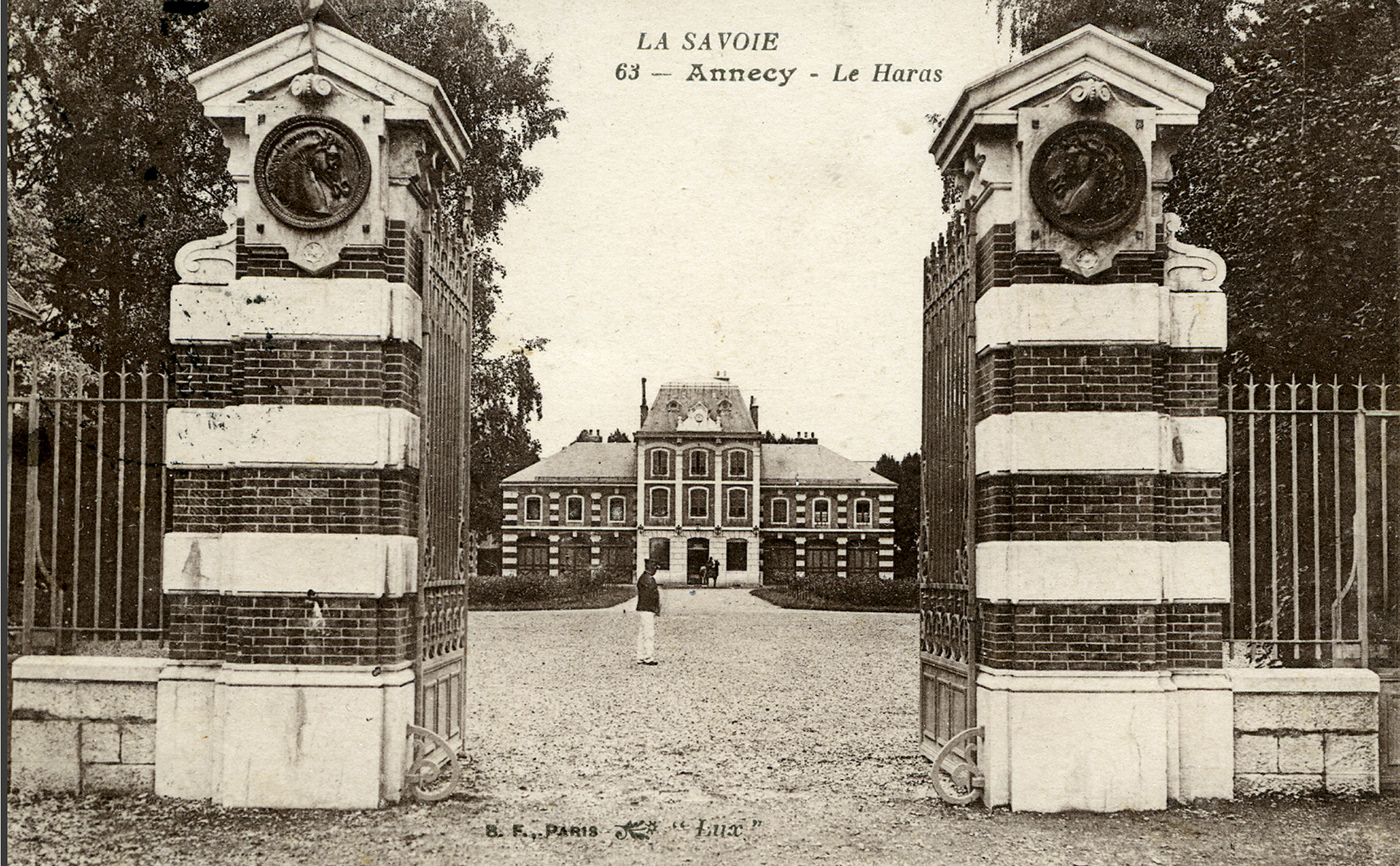
Strategic work is being carried out to clarify the issues and expressions specific to the city's management of the site, in agreement with all stakeholders. This work is being carried out in collaboration with Pierre-Emmanuel Jansen.




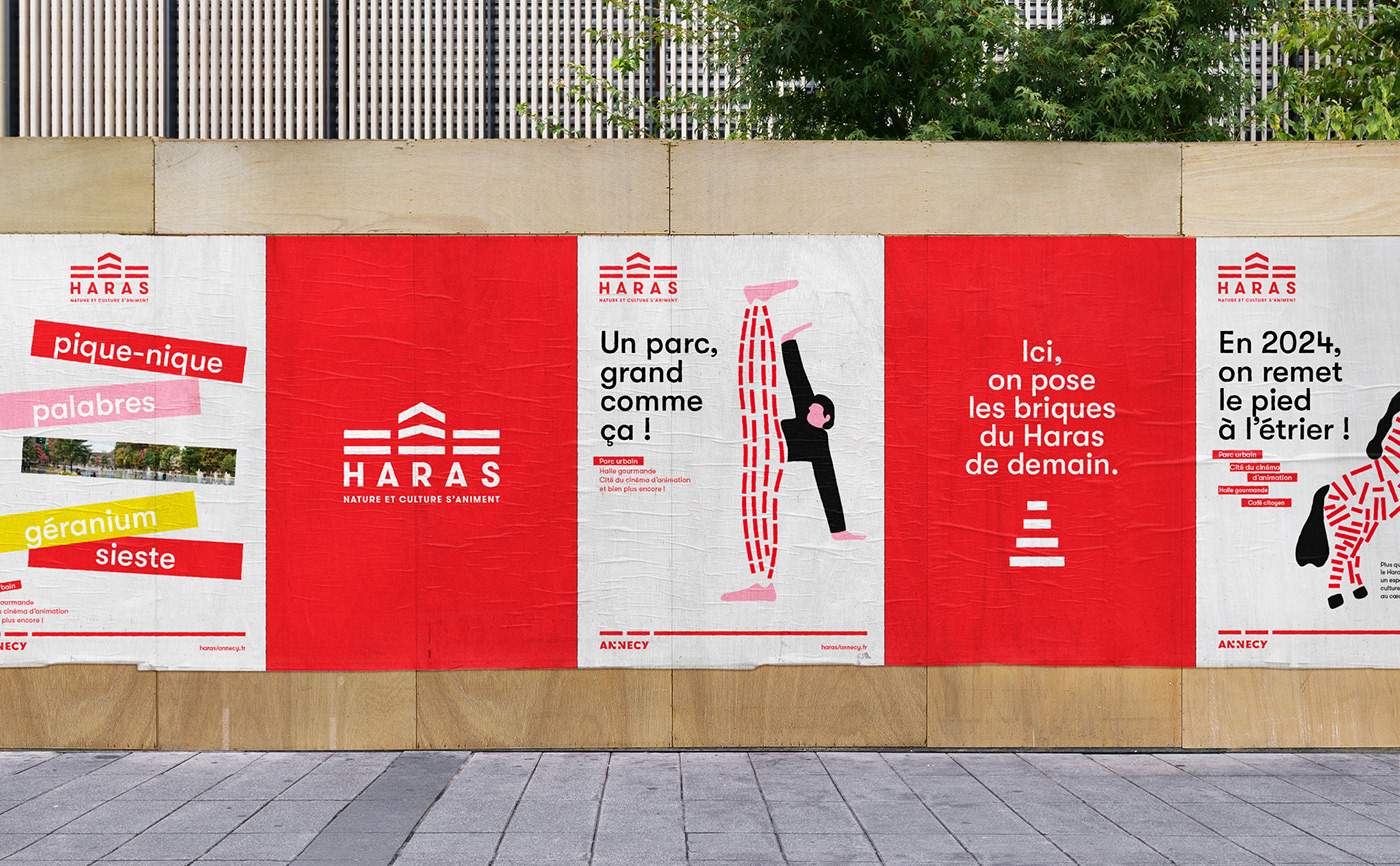
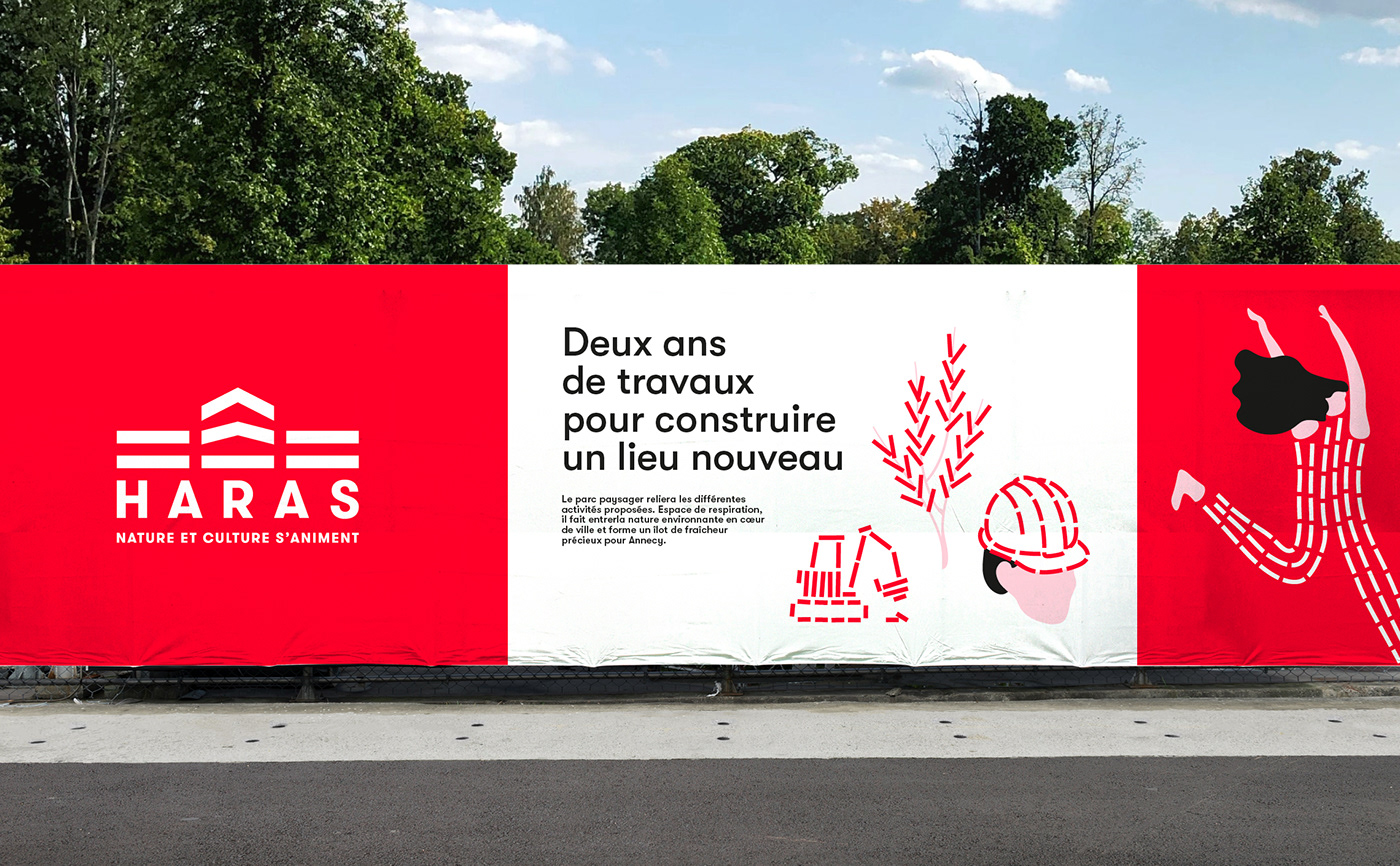
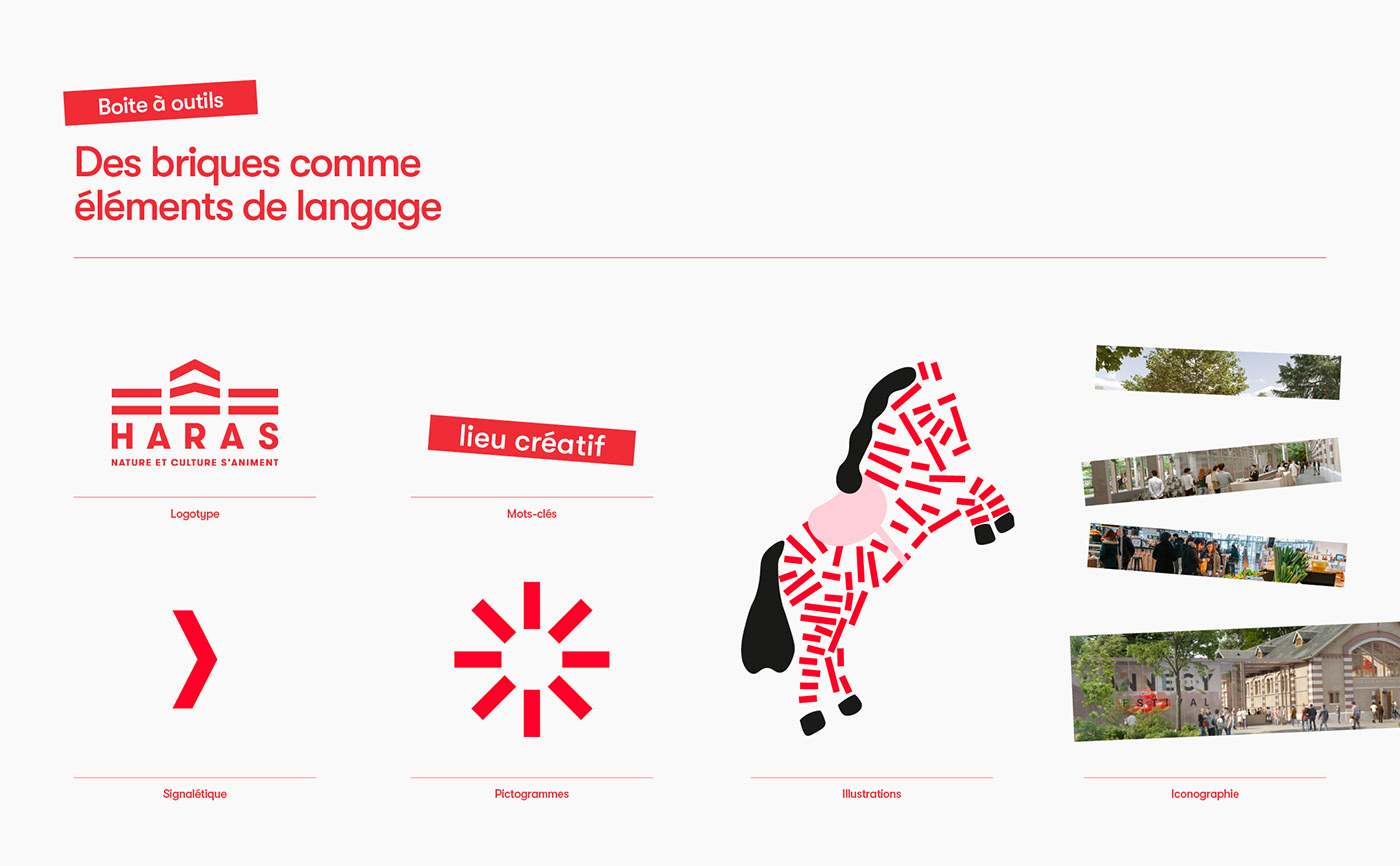
Bringing the Haras bricks to life!
While the logotype reflects the history and prestige of the site, the system had to offer a more unexpected and creative expression, echoing the challenges of cultural and accessible communication. The creative game is simple: how do you build a plurality of visual elements from a single brick?

